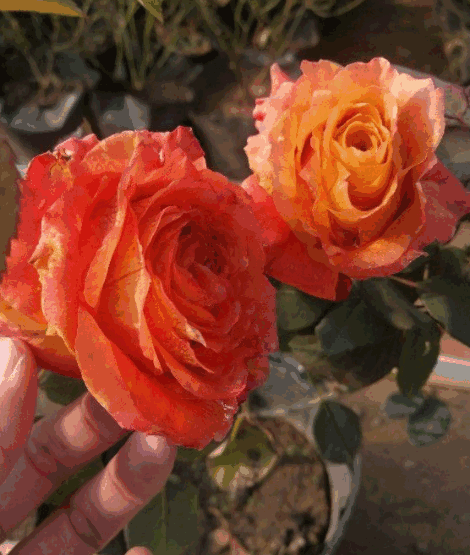Why Rose Buds Won’t Open: 5 Common Causes and Fixes
Have you ever encountered roses with buds that are slow to open? Today we will discuss the common reasons why rose buds do not open properly and the corresponding solutions.

Factors affecting the opening of rose buds
From pruning to blooming, roses usually take 50-60 days in the spring and fall, and only 30-40 days in the summer. If your rose buds have not opened for a long time, or remain half-open, or even wilt before they show color, then you need to focus on the following 5 possible causes.
1. Insufficient light
Roses are very light-loving plants. If it is cloudy or rainy for a long time, or if it is placed indoors where there is a lack of light, the growth of roses will be weakened, and the opening of flower buds will be significantly slowed down, which may even lead to the wilting of flower buds before they open.
Solution:
Make sure the rose receives plenty of light every day. If it is cloudy or rainy, try to move the potted plant to a brightly lit location and avoid leaving it in a dark environment for a long time.
2. Temperature effects
Temperature has a significant effect on the opening of rose buds. In the warm late spring season, roses may take only about 35 days from pruning to blooming, while in early spring or late fall when temperatures are cooler, the process may take 40-60 days.
Solution:
If temperatures are too low for buds to open, move the pot to a sunny and warm location to help raise the local temperature.
3. Disease infestation

Diseases and pests are one of the common reasons why rose buds fail to open, especially in spring and fall when there is a big difference in temperature between morning and evening. In late fall, the combined effects of disease and low temperatures often cause buds to wilt before they open.
Main Disease: Gray Mold
Gray mold is most common in rainy spring and fall. When slightly infected, color spots will appear on the petals with yellow edges, and the buds will always remain half-open; in severe cases, the buds will mold and rot before they open.
Solution:
Spray the buds once with a fungicide for prevention when they show color. If already infected, it is recommended to cut off the infected buds as soon as possible to avoid the spread of the disease.
4. Nutrient deficiency
In addition to pests and diseases, nutrient deficiency is also an important factor affecting the opening of rose buds. Some rose varieties have a large number of buds, and a branch may produce seven or eight or even a dozen buds. If you don’t thin the buds or fertilize in time, it may lead to insufficient nutrients and the buds can’t open normally.
Solution:
Fertilize in time to make sure the rose gets enough nutrients. If there are too many flower buds, you can properly thin the buds and cut off some smaller buds, so that the nutrients can be supplied to the main buds.
5. Variety characteristics
If the above 4 external factors are eliminated and the rose buds still cannot open, then it may be due to the characteristics of the variety itself. Some rose varieties are born with buds that are difficult to fully open, such as “Goddess of Wisdom”, “Song of the Sea”, “Red Dragon”, “Carnival Party ”, “Sea Song”, “Red Dragon”, “Carnival Party”, etc. The buds of these varieties usually remain half-open, giving them a distinctive look.
Solution:
Understand the characteristics of the rose variety you are growing, and if it is a variety that is naturally difficult to open, adjust the care appropriately or choose another variety that is easier to open.





